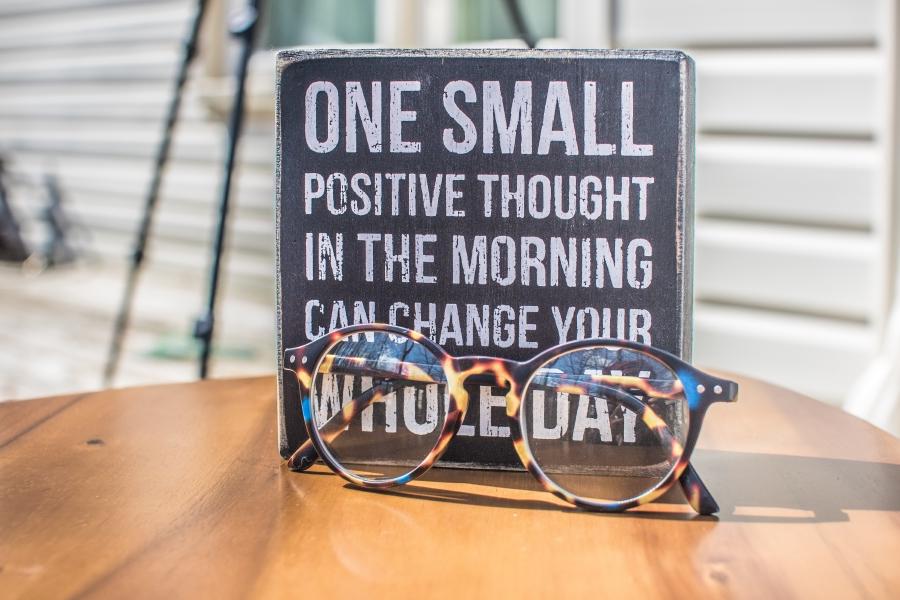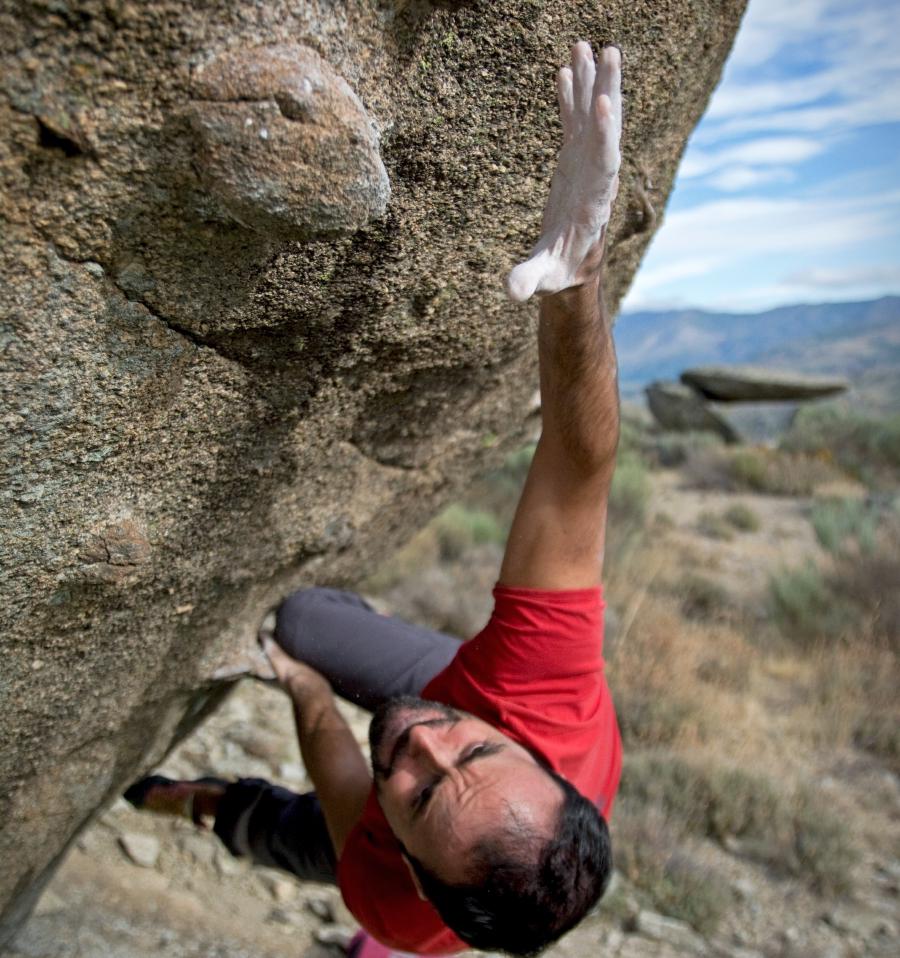
In Carol Dweck’s micro lecture for Stanford Alumni (2014), she defines a fixed mindset as believing that one only has a certain amount of “stuff” and that they cannot get any more. In contrast, a growth mindset sees the opportunity to grow and develop more “stuff” through effort and persistence. Dweck goes further to describe how these two mindsets influence typical goals, where fixed mindset learners strive to never look “dumb,” whereas growth mindset learners strive to continually improve.
If you are an educator that has asked your class a question and then received the Zoom stare where not a single learner is willing to even guess, there is a high chance that you are looking at a group with fixed mindsets.
Strategies to Develop Growth Mindsets
The best starting point for combating fixed mindsets is to be purposeful in developing a growth mindset. Here are a couple of strategies that you can implement to try.
Become Positive About Learning

Business research suggests that optimistic people are more motivated and thus more likely to achieve their goals (Wilson & Conyers, 2015), and that optimism is one of the driving aspects of a growth mindset. In Dweck’s research, she describes the pessimism versus optimism dichotomy as the “tyranny of now” versus the “power of yet” (Stanford Alumni, 2014). Those stuck in the “tyranny of now” fixate on their current state: “I’m not good at that,” or “I’m not smart enough for this.” They need someone to help them shift their perspective by adding “yet” to their thoughts. There are a couple of ways that educators can help learners move from “now” to “yet.”
One activity from Lexia Learning (n.d.) recommends that the educator describe a variety of situations and ask the class what someone with a fixed mindset might say in each situation, and then talk about the growth mindset alternative phrases might be. Another recommendation comes from Wilson and Conyers (2015) who suggest introducing learners to the CIA model. The “C” stands for Control; learners need to be aware of their thoughts to recognize when it drifts towards pessimism so that that can then take control of their thinking and adjust. The “I” stands for Influence; learners need to be aware of what and who influences them and how they influence them and look for those that encourage their optimism and the effectiveness of hard work. The “A” stands for Acknowledgement; learners need to be aware of areas in their life that they have limited control and minimize the time and energy they put into those situations.
Schedule Productive Struggle

We know from Vygotsky’s Zone of Proximal Development (ZPD) that (1) learners make the most growth when they are pushed outside of their comfort zone, and (2) when learners are pushed outside of their comfort zone, they need support from a knowledge source.
Cowen (2016) suggests that educators should encourage “productive struggle” by starting each lesson with a protected amount of time for independent work. As the lesson progresses, learners begin working in pairs and then small groups before finally working with the class as a whole.
While this would seem to go in the face of Vygotsky’s ZPD, since he notes the importance of social learning, it is quite clever. This process pushes learners outside of their comfort zone, asking them to face a challenge and be okay with not knowing exactly how to solve it. Over time, they slowly gain support which might help them solve the problem, which helps determine the least amount of support necessary for that particular struggle. For learners that have their struggle shift into frustration, Cowen (2016) suggests having a plan for multiple entry points into the problem; finding out how they are stuck and then suggesting a different way to approach the problem - not giving hints.
Provide Better Feedback

An important aspect of developing a growth mindset is instilling that failure and taking risks are how one grows and achieves a goal. How someone perceives these two actions is greatly influenced by the type of feedback they receive.
In Dweck’s research, she found that when learners were praised for their intelligence, it made them less likely to take risks for fear of failure (Stanford Alumni, 2014). They feel pressure to maintain their persona of being “smart,” but intelligence in this context is something outside their real control. Conversely, learners that were praised for their persistence and effort throughout challenges developed confidence in themselves, which encouraged them to take more risks. Educators that encourage growth mindset see learning as a progression and are constantly assessing learners on their progress rather than their explicit knowledge. This means that feedback given to learners should also focus on process rather than product. Conley (2014) provides a variety of examples of what is commonly said, how it can be modified, and what is the research behind it.
| You Say… | You Could Say… | Why? |
|---|---|---|
| Good job! | I can really see your effort in revision. | Praising effort and process encourages writers to keep trying. (Dweck) |
| You’re a good writer! | Those drafts paid off in sentence variety and imagery. | Encouraging growth instead of a fixed mindset makes for happier people in charge of their progress. (Dweck) |
| You don’t know how to use semicolons. | You haven’t mastered semicolons yet. | The power of yet suggests growth and mastery. (Dweck and Pink) |
| Please revise. | Improved topic sentences and transitions between paragraphs would improve your paper’s structure and readability. | Specific reader-focused feedback might seem nitpicky, but helps writers feel the purpose of revision. |
| Write a persuasive essay. | Persuade your principal/Congressman/parents to do a specific action. | Writers need a real purpose and real audience to write their best work. (Pink) |
| Read Heart of Darkness. Discuss the importance of the Congo River to this narrative. | Choose a work from the list of college-bound reading. How does geography inform the symbolic meaning of the work? | People prefer autonomy and choice. (Pink) |
Goal Setting with Learners
Often a fixed mindset is the result of not seeing something as possible and this is often the result of just not knowing how to get the wanted result. This is why working with learners to break up large tasks into smaller goals can be powerful in developing growth mindsets.
Return to Face-to-Face

School during COVID-19 has put education in an interesting spot. Keeping class sizes small is necessary, learners staying at home to protect loved ones is necessary, and continuing to move on with life and education is necessary. The question arises, how do we do all these things in a way that they are effective and meaningful with zero precedent?
In Gwinnett County, the district decided to utilize a hybrid teaching model. Families were given the option to learn virtually or come to school and learn face-to-face. Educators were tasked with addressing both groups simultaneously. With minimal training and limited time, educators began retooling their entire curriculum to work in both formats.
As you can imagine, in most classes it has not worked. This isn’t because it couldn’t work, but because there wasn’t enough support for this large of a task. Learners were tasked with taking ownership of their own learning with distractions, such as sleeping or watching TV, significantly easier to access than before. As you can imagine here, for most this has not worked because they lacked the executive function and agency to make it happen. This has led to an astronomical number of failing grades.
To help remedy the problem, administrators have been reaching out to families of virtual learners and having conversations about whether it may be necessary for those learners to return face-to-face. When these learners enter my classroom for the first time, I make it a goal to spend 15-20 minutes talking to them through the following process.
- How are you doing? How are you feeling?
- What was the biggest struggle that you had with digital learning?
- Have you talked to your teachers (preferably in person) and asked what assignments are still available to be completed?
- Look at every class and know the exact number of missing assignments. Know this number. “A lot” is ambiguous and can drain you, but you can see “10” decrease over time.
- Look at every class and think of a friend or acquaintance that you know is doing well and could support you.
- Which will help you more mentally, seeing the number of missing assignments go down quickly or seeing the grade go up quickly?
- Look at every class, which class do you feel the most in control of? Which class do you feel the least in control of?
- Let’s create a game plan for that class.
Each step of the way, the learner and I talk and discuss what is going on. I try to provide insight into the struggles we, as educators, are experiencing and then discuss the best ways to approach talking to us to get the most open and helpful responses.
The learners, so far, have all said it has been helpful. They leave our conversation feeling like they have a game plan and get to work. Is it perfect? No. Do they still struggle after? Yes, but it’s natural. It is a slow process, and we talk about that. They are not failures, they just dug a hole and dug it too deep before they finally got help, but now we are going to get them out.
Music Technology Capstone

In my music technology program, I make it a point to shift from a mostly educator-led class during their first year, to an entirely learner-led class during their third year. Music technology covers a wide range of topics, from writing music to recording and mixing to composing for film, so it is important to me that the learners find what they really enjoy and explore that topic further. To do this, my third-year learners are required to complete a capstone project.
At the start of the year, they meet with me individually so that we can talk about what aspect of music technology they want to focus on. We discuss possible learning goals, possible topics to explore, and possible projects to create. From here, they begin developing a website and blog that will document their journey. Every two weeks, they are tasked with researching some aspects of their capstone, analyzing professional examples of their final project, working on their project, and writing a blog post reflecting on everything they have learned and done for the week. During these two weeks, they meet with me twice to discuss what they have learned and what they are working on. In this meeting, we discuss possible directions and engage in curious exploration of what they have learned and what they will learn next.
Supporting Growth Towards Mastery

Flipped Classroom
When supporting mastery learning, it is important to keep in mind that everyone learns at a different pace. To help support my learners, I have transitioned my classroom to an in-class flipped model. The reason I have made it in-class versus the traditional flipped classroom is because my class uses specialized software which they don’t have access to at home. As a result, what they can do at home is limited.
Over the course of a unit, learners work through a variety of resources including instructional videos, demonstrations, articles, and quizzes to learn content before beginning their project. The great thing about this is that learners can work at their own pace and refer back to a resource as needed. This allows them to control their own learning towards mastery.
Learning Pathways
In conjunction with the flipped classroom, learners have access to a variety of learning pathways when approaching different content units. Just like they learn at different paces, they each have varying types and degrees of background knowledge.
Within a particular unit there are a couple of different ways that a learner can tackle the objective, so units are designed in a way that allows them to move around to what works best for them. Additionally, they can take pre-tests to assess their current knowledge to determine if they can or should start by diving a little deeper. This leads to a more personalized and immediate path to mastery on a particular content chunk.
Immediate Feedback
For learners to achieve mastery, there needs to be continuous improvement through deliberate practice (Ericsson & Pool, 2017). This means that they need immediate access to quality feedback, and there are a couple of ways that I make this happen in my classroom.
The first, and most immediate, piece of feedback they receive is through weekly content quizzes. Learners take these on the computer, which grades them automatically, so they immediately know what they need to go back and review. Additionally, these quizzes provide advice for each question what exactly the should review and where the best place to find that content may be.
The second major piece of feedback they receive is on their projects. Rather than having them submit projects to a drop box and then me grade them later, the learners get my attention when they believe they are finished. I sit with them and look at their project before taking three to five minutes to discuss with them what is working well and things they could improve on. Depending on the improvements needed, I may ask them to make those changes and show me again or tell them to be sure they include them in the next project. I have found that this has been extremely helpful in developing mastery.
References
Conley, A. K. (2014, July 14). Nurturing Intrinsic Motivation and Growth Mindset in Writing. Edutopia. https://www.edutopia.org/blog/intrinsic-motivation-growth-mindset-writing-amy-conley
Cowen, E. (2016, January 7). Harnessing the Power of Productive Struggle. Edutopia. https://www.edutopia.org/blog/harnessing-power-of-productive-struggle-ellie-cowen
Edutopia. (2016, October 4). Learning Through Mistakes. Edutopia. https://www.edutopia.org/practice/embracing-failure-building-growth-mindset-through-arts
Ericsson, A & Pool, R. (2017). Peak: Secrets from the New Science of Expertise. Eamon Dolan/Houghton Mifflin Harcourt.
Lexia Learning. (n.d.) 6 Tips to Help Students Develop a Growth Mindset in the Classroom. Lexia Learning. https://www.lexialearning.com/blog/6-tips-help-students-develop-growth-mindset-classroom
Stanford Alumni. (2014, October 9). Developing a Growth Mindset with Carol Dweck [Video]. YouTube. https://www.youtube.com/watch?v=hiiEeMN7vbQ
Wilson, D. & Conyers, M. (2015, December 9). Positive Brains Are Smarter Brains. Edutopia. https://www.edutopia.org/blog/positive-brains-are-smarter-brains-donna-wilson-marcus-conyers